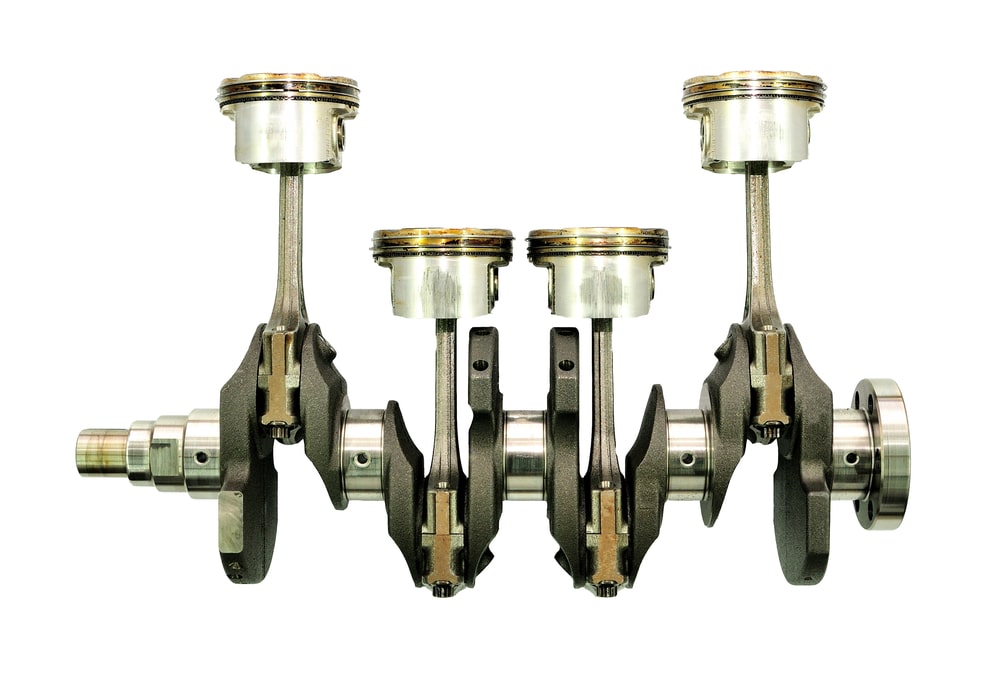Braking System
You might not spend much time thinking too much about your car’s braking system. You press the pedal; your vehicle slows down. Not much to it, right?
In reality, your braking system is a complex set of mechanical and hydraulic components working together with impressive speed and precision. Each part plays a vital role in converting momentum into a smooth stop, helping you stay in control and avoid danger.
Understanding how car brakes work can help you better appreciate why it’s essential to keep everything in top condition.
In this blog, we’ll walk you through:
- How car brakes work, from pedal to pad
- The mechanics behind stopping power
- What happens when you press the brake pedal
- Key safety systems like ABS and the parking brake
- How regular servicing at Roade Main Garage in Northampton keeps your braking system road-ready
Braking System Basics: What’s Going On Behind the Scenes
Every time you touch the brake pedal, your car’s braking system harnesses considerable force to slow down a moving vehicle weighing more than a tonne. That action might feel light and effortless, but behind it is a carefully designed process based on hydraulic principles and friction.
And that’s what we’ll explore here, starting with the core physics behind how car brakes work.
The Simple Science Behind Stopping
Your car in motion stores kinetic energy. The faster you go, the more energy it has. To slow the vehicle, that energy must be dissipated, and the braking system’s job is to do exactly that by converting kinetic energy into heat through friction.
There are several braking setups in use today, but most passenger vehicles rely on one of two types: disc brakes or drum brakes. Here’s a simplified breakdown of what happens when you apply the brakes:
- You press the brake pedal
- This creates hydraulic pressure within a sealed network of brake lines and hoses
- That pressure is distributed to all four wheels
- Depending on the system, either brake pads clamp down on a spinning disc (disc brakes) or brake shoes press outward inside a drum (drum brakes)
- Friction is created, heat is generated, and the wheels slow down accordingly
Modern cars also include safety features such as Anti-lock Braking Systems (ABS), which prevent wheel lock-up during hard braking, improving stability and control.

So, what’s really happening the moment your foot touches the pedal? Let’s take a closer look.
The Chain Reaction Your Brake Pedal Starts
That familiar motion of pressing the brake pedal kicks off a chain of events that happens in a fraction of a second, but it’s highly coordinated and crucial for your safety.
Here’s what takes place, step by step:
- Your foot depresses the brake pedal, initiating the braking process.
- The pedal engages the brake servo, also called a brake booster. This unit multiplies the force from your foot, reducing the physical effort needed to bring your car to a stop.
- The enhanced force is transmitted to the master cylinder. This component converts mechanical effort into hydraulic pressure within the brake fluid.
- That pressure travels through the closed-circuit brake lines and hoses. Since brake fluid is essentially incompressible and in a closed circuit, it loses very little pressure.
- At each wheel, the hydraulic pressure activates the braking components:
- In disc brake systems, the pressure pushes pistons within a brake calliper, forcing the brake pads to clamp onto a spinning metal brake disc. This friction reduces wheel speed and converts motion into heat.
- In drum brake systems, common on older or rear-wheel setups, the pressure drives wheel cylinders that push brake shoes outward. These press against the inner surface of a rotating drum, again creating friction and slowing the wheel.

- In disc brake systems, the pressure pushes pistons within a brake calliper, forcing the brake pads to clamp onto a spinning metal brake disc. This friction reduces wheel speed and converts motion into heat.
- When you release the pedal, the system resets: the servo disengages, the pressure drops, and return springs help the braking components retract. Your wheels are free to rotate again, and you’re ready to move.
This entire process is designed to respond quickly, precisely, and consistently, giving you the power to slow down or stop smoothly every time you drive.
Other Key Features of the Braking System
Anti-lock Braking System (ABS)
ABS has become standard in modern vehicles for good reason. When sensors detect that one or more wheels are at risk of locking up under heavy braking, the system steps in automatically. It rapidly adjusts the brake pressure at each affected wheel, releasing and reapplying pressure multiple times per second.
This pulsating action prevents the wheels from locking, helping you maintain steering control even in emergency situations. You stay in command, and the car remains more stable while decelerating.
Parking Brake
The parking brake, also called the handbrake or emergency brake, is a separate mechanism that operates independently of the main braking system.
Older models use a manual lever connected by cables to the rear brakes. More recent vehicles often feature an electric handbrake that uses a motor to activate the brake system. Either way, the purpose remains the same: to keep your vehicle securely parked and to serve as an emergency backup if the hydraulic brakes ever fail.
Regardless of the setup, the parking brake functions separately from the main braking system and is legally required to act on at least two wheels, making it a vital safety feature as well as a parking tool.
Your Brakes Deserve Attention Before They Show Symptoms
Brake issues rarely appear out of nowhere. Often, early signs like squeaking, grinding, or changes in pedal feel indicate a developing problem. It might not seem urgent, but delaying an inspection can turn a minor fault into a major safety risk.
At Roade Main Garage in Northampton, we take your brake safety seriously. During routine servicing, we always inspect the braking system for wear, corrosion, and any developing issues. If something seems off between services, don’t wait—just give us a call.
Our experienced technicians will carry out a complete assessment and advise you clearly on the best course of action. No pressure, no jargon—just straightforward, professional guidance.
Trust Roade Main Garage with Your Braking System
Your braking system is the single most important safety feature on your vehicle. Understanding how car brakes work helps you appreciate the value of proactive care—and we’re here to deliver it.
We’ve built our reputation across Northampton and Milton Keynes on thorough inspections, honest advice, and quality workmanship. Whether you’re due a service or you’ve noticed something unusual, we’re here to help.
We have a {{average-rating}} star Google rating from {{review-count}} satisfied customers.
Here’s why drivers choose Roade Main Garage:
- 12-month parts and labour guarantee on all work
- Transparent pricing and clear communication at every step
- Genuine and OEM-quality* parts fitted by trained technicians
- Dealer-level technical expertise and diagnosis tools
Don’t leave your safety to chance. For brake checks, servicing, or repairs, call Roade Main Garage on 01604 862262. We’ll make sure your braking system is in top condition, so you can drive with confidence.
Call Now 01604 862262 Save on Brake Servicing
*OEM stands for Original Equipment Manufacturer. When it comes to vehicle parts, this means the parts are made by the same company that produced the original parts for the vehicle manufacturer



